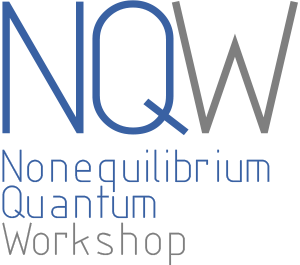
- This event has passed.
Nanocryotron-driven Charge Configuration Memory devices
December 12, 2021 @ 20:00 - 20:15 CET
Anže Mraz,1,4 Rok Venturini,1,3 Damjan Svetin,1,2 Vitomir Sever,1 Ian A. Mihailovic,1 Jan Ravnik,1,5 Igor Vaskivskyi,1,2 Tevž Lotrič,1 Bor Brezec,1 Matic Merljak,1 Maria D’Antuono,6 Daniela Stornaiulo,6 Francesco Tafuri,6 Dimitrios Kazazis,5 Yasin Ekinci,5 Viktor. V. Kabanov1 and Dragan Mihailovic1,2
1Jozef Stefan Institute, Dept. of Complex Matter, Jamova 39, SI-1000 Ljubljana, Slovenia
2CENN Nanocenter, Jamova 39, SI-1000 Ljubljana, Slovenia
3Faculty for Mathematics and Physics, University of Ljubljana, Jadranska 19, SI-1000 Ljubljana, Slovenia
4Faculty for Electrical Engineering, University of Ljubljana, Tržaška 25, SI-1000 Ljubljana, Slovenia
5LMN-Paul Scherrer institute, Villigen, Switzerland
6Dept. of Physics, University of Naples and CNR-SPIN, Naples, Italy
For some time, cryo-computing has been severely limited by the absence of a suitable fast and energy efficient low-temperature memory1,2making it an ideal platform for energy efficient memories. Conventional superconducting memories use an architecture based on Josephson junctions (JJs. Ideally, such memory should be compatible with single-flux quantum (SFQ) logic in terms of speed, switching energy and matching impedance. Here we present an implementation of non-volatile charge configuration memory (CCM)3,4 in a cryo-computing environment with a hybrid device incorporating a superconducting nanowire cryotron (nTron)5. The dynamical response of the device is modelled in terms of the superconducting order parameter in a confined channel of a current-controlled nanowire with a CCM shunt6geared towards understanding and controlling coherence and dissipation in nanowires. The dynamics is probed by measuring the evolution of the V-I characteristics and the distributions of switching and retrapping currents upon varying the shunt resistor and temperature. Theoretical analysis of the experiments indicates that as the value of the shunt resistance is decreased, the dynamics turns more coherent presumably due to stabilization of phase-slip centers in the wire and furthermore the switching current approaches the Bardeen’s prediction for equilibrium depairing current. By a detailed comparison between theory and experimental, we make headway into identifying regimes in which the quasi-one-dimensional wire can effectively be described by a zero-dimensional circuit model analogous to the RCSJ (resistively and capacitively shunted Josephson junction. Analysis of time-dynamics and current-voltage characteristics based on measured device parameters show that single flux quantum (SFQ)-level pulses can drive non-volatile CCM on the picosecond timescale. We also present first measured current-voltage characteristics and read operation of actual hybrid memory devices showing expected behaviour.
The inherent high energy efficiency and ultrahigh speed makes this hybrid device an ideal memory for use in cryo-computing and quantum computing peripheral devices.
- Q.-Y. Zhao, et al. Superconductor Science and Technology 31, 035009 (2018).
- D.S.Holmes et al, IEEE Trans. Appl. Supercond. 23, 1701610–1701610 (2013).
- I. Vaskivskyi et al. Nat. Comm. 7, 11442 (2016).
- D. Mihailovic et al., APL 119, 013106 (2021).
- A.N. McCaughan, & K.K. Berggren, A Nano Letters 14, 5748–5753 (2014).
- M.W.Brenner,et al., Phys. Rev. B 85, 224507 (2012).


